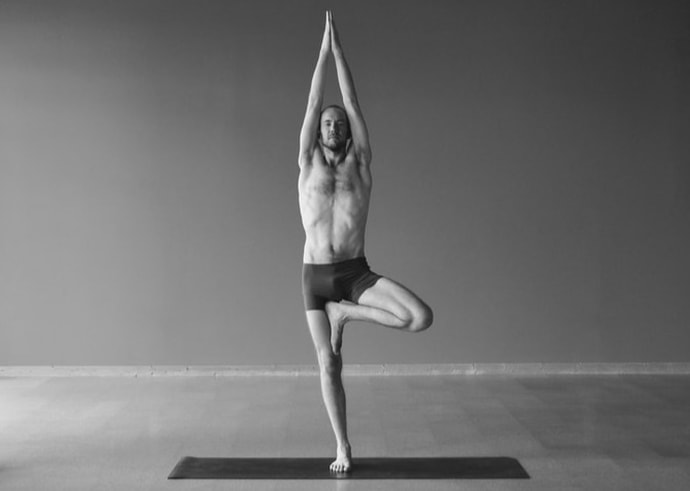|
Both yogic and Buddhist traditions emphasize the inherent suffering of being alive and being human. And both traditions place great importance on removing suffering in order to live contently and peacefully. But these traditions, focused as they are on our conceptions of the self and the world around us, tend to zero in on one kind of suffering in particular — suffering which comes from desire and attachment.
There are other forms of suffering, too. And it is vital to understand what we are talking about when we discuss 'removing suffering'. As we see it, there are three distinct forms of suffering. 1. EXISTENTIAL DISTRESSS It may be obvious to state that we are here as living, breathing beings. We are born, we live for awhile, and then we die. This period of 'being' is defined by a physical, biological form, a body which is shot through with nerve endings and loaded with self-preserving instincts. These characteristics are shared by every living being — whether human, animal, insect or amoeba. They are inherent in the physical nature of our being. When the existence of our physical being is threatened, we experience distress. This happens when we are hungry or starving, when we have no shelter, if we are threatened with physical violence, etc. These create real, visceral suffering that is common to all living beings. You can think of it like this: If another animal would suffer in this situation, due to a threat to its life, it is this type of existential suffering. 2. PAIN Another result of having physical bodies is that they are sensitive. If I hit my finger with a hammer, or cut my face, I will experience pain no matter how enlightened I am. Neurological scans show that the brain registers physical pain acutely, even in meditating monks. There is no way around this as long as we inhabit these bodies. 3. THE SUFFERING OF EGO, DESIRE AND ATTACHMENT The third kind of suffering is uniquely human. It is the target of the systems of yoga and Buddhism. While we can not remove the first two kinds of suffering while we are alive, this third type can be eliminated to a large degree. As humans, we have an acute sense of who we are and how we are different from those around us. This sense of individual identity is called ego by the yogis. Modern western culture cultivates this sense of identity, encouraging us to embrace our individuality and live out our desires — who we wish ourselves to be. As powerful as this idea may be, it is still only an idea. We build much of our lives around this idea of self, and it causes us great suffering. Our desires and attachments stem from our ego, and they cause us to hold onto things that are fleeting by their very nature. A job, a car, a cookie, a spouse, our own identity... all these things change over time and eventually disappear altogether. When we link our happiness to them, we are setting ourselves up for suffering because they are transitory. To paraphrase the Yoga Sutras, we are taking impermanent things and imagining them to be permanent. It is a recipe for trouble. REMOVING SUFFERING The traditions of yoga and Buddhism insist that the third kind of suffering can be halted by stopping it before it starts. Like weeding a garden, we remove our desires, attachments and ego so that contentment may grow and thrive. The first two kinds of suffering — existential distress and pain — are unavoidable elements of living in these bodies. When we talk about 'removing suffering', this does not mean that we will never be hungry, never fear for our lives or experience pain. It means that we will see ourselves and the world more clearly, thus ceasing to mistake our own ideas of self for reality.
0 Comments
Leave a Reply. |
AUTHORSScott & Ida are Yoga Acharyas (Masters of Yoga). They are scholars as well as practitioners of yogic postures, breath control and meditation. They are the head teachers of Ghosh Yoga.
POPULAR- The 113 Postures of Ghosh Yoga
- Make the Hamstrings Strong, Not Long - Understanding Chair Posture - Lock the Knee History - It Doesn't Matter If Your Head Is On Your Knee - Bow Pose (Dhanurasana) - 5 Reasons To Backbend - Origins of Standing Bow - The Traditional Yoga In Bikram's Class - What About the Women?! - Through Bishnu's Eyes - Why Teaching Is Not a Personal Practice Categories
All
Archives
May 2024
|







 RSS Feed
RSS Feed